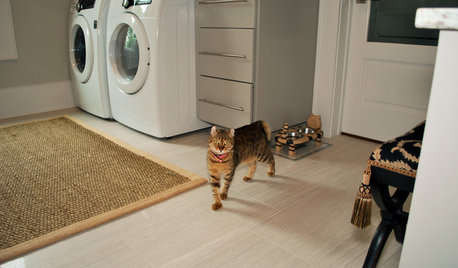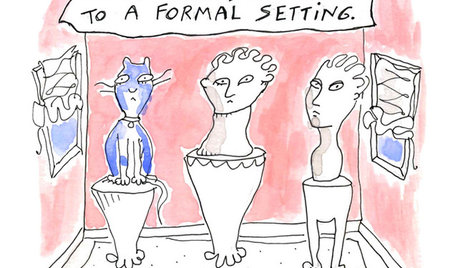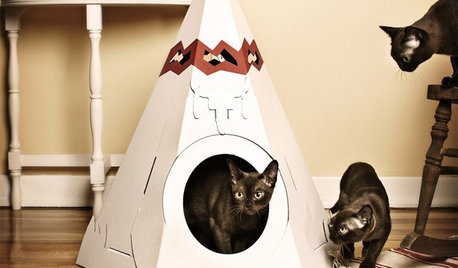I have three cats that I would like to toilet train. One is a 5 month old kitten and the other two are much older. Does anyone have any suggestions on how to successfully toilet train multiple cats?
I would like to try to use the method below:
There have been more books and articles about toilet-training your cat than you'd think. In the summer of 1989, when Misha was a small kitten with big ears and enough meow for five cats, I searched out and read a half-dozen of them. And then tried it myself, and discovered there were a couple of things they all failed to mention ...
Some of the advice in those books turned out to be impractical. Some of it was unnecessary. Some of it was quite sensible and worked like a charm. A lot of what works and what doesn't work depends on the individual cat on her personality and smarts. Here's what worked for me and Misha.
The central idea is that the transition from litter box to toilet be accomplished in a series of stages. You make a small change and then give your cat time to adjust before you make another small change. If at any time Felix gives the whole thing up and pees on the rug instead, you're pushing him too far too fast; back up a stage or two and try again, more slowly.
In the following instructions, I've used the word "rest" to mean: do nothing for a period of between a day and a week, depending on how flappable your cat is. (Misha caught on fast and was completely trained in under two weeks, far in advance of what the books led me to expect.)
Ready? First start by training yourself ...
The very most important thing to remember is: Lid Up, Seat Down. Post a note on the back of the door or the lid of the toilet if you think you (or your housemates or guests) might forget. (Nowadays, if I have a guest who leaves the lid down, Misha will usually come and ask me to fix it, but you can't expect every cat to go to this much trouble. Besides, he's been using the toilet for more than six years now; when the whole idea was new to him he'd just as soon pee in the bathtub instead.) And if you are accustomed to closing the bathroom door when it's empty, you'll have to break that habit too.
Begin by moving the cat's current litter box from wherever it is to one side of the toilet. Make sure he knows where it is and uses it. Rest. Next put something  a stack of newspapers, a phone book, a cardboard box  under the litter box to raise it, say, about an inch. (Magazines are too slick; you don't want the litter box sliding around and making Felix feel insecure. Tape the litter box down if you need to.) Rest. Get another box or phone book and raise it a little higher. Rest. Continue this process until the bottom of the litter box is level with the top of the toilet seat. (For Misha I raised it about two inches per day.)
At the beginning of this process, your cat could just step into the box; later he began jumping up into it, until at some point he probably started jumping up onto the toilet seat first and stepping into the box from there. You've been diligently keeping the lid up and the seat down, of course, so by now your cat is thoroughly familiar with tromping around on the open toilet.
Lift the seat on your toilet and measure the inside diameter of the top of the bowl at its widest point. Venture forth and buy a metal mixing bowl of that diameter. Do not (I discovered this the hard way) substitute a plastic bowl. A plastic bowl will not support the cat's weight and will bend, dropping into the toilet bowl and spilling litter everywhere, not to mention startling hell out of the cat.
Now you move the litter box over so that it's sitting directly over the toilet seat. (If your cat has shown reluctance over previous changes, you might want to split this into two stages, moving it halfway onto the seat and then fully over.) Take away the stack of phone books or whatever. Rest.
Here's the cool part. Take away the litter box entirely. (Ta da!) Nestle the metal mixing bowl inside the toilet bowl and lower the seat. Fill the bowl with about two inches of litter (all of this is much easier if you have the tiny granules of litter that can be scooped out and flushed).
Naturally, any humans using the toilet at this point will want to remove the metal bowl prior to their own use and replace it afterward. The next week or two the whole process is likely to be something of an annoyance; if you begin to think it's not worth it, just remember that you will never have to clean a litter box again.



















larkspur_grow
pamghatten
Related Professionals
Lafayette Architects & Building Designers · Appleton Interior Designers & Decorators · San Elizario Furniture & Accessories · Greenwood Village Furniture & Accessories · Kendall Furniture & Accessories · Alton Cabinets & Cabinetry · Ahwatukee Flooring Contractors · Alexandria Flooring Contractors · Beaumont Flooring Contractors · Canton Flooring Contractors · Fishers Flooring Contractors · Norfolk Flooring Contractors · St. Louis Flooring Contractors · St. Louis Flooring Contractors · Topeka Flooring Contractorsgardengal11Original Author
betsyhac
carmen_grower_2007
plastician
annzgw
Debbie Downer